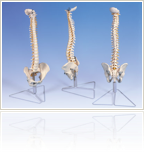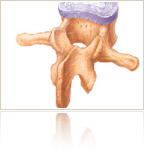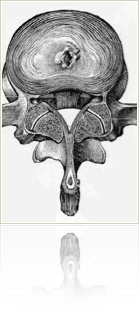




Intervertebral discs lie between your vertebrae. Everyone has them (23 of them in fact) and many of us will experience injury and pain in our lifetime because of them [4]. Their purpose is to allow your spine to flex and move but still stay together, so that your body can absorb the shocks and stresses during daily tasks. Over time, intervertebral discs can wear or even fail, leading to significantly decreased mobility and almost always extreme pain. The current methods of dealing with injuries of the intervertebral discs involve procedures such as removing them and fusing the vertebrae together, or replacing them with manmade artificial plastic or metal discs. Although successful, these methods have many drawbacks, and patients rarely regain full function and range of motion [1, 2].
This website explores up and coming tissue-engineering approaches to dealing with intervertebral disc problems. The basics of intervertebral discs are discussed here, and several papers are reviewed concerning tissue engineered intervertebral discs. These new approaches involve taking live cells and growing a patient-specific intervertebral disc that can be implanted and incorporated naturally back in the body. Although research is making progress in this area, there is still much work to be done. If successful, however, tissue engineered intervertebral discs will provide a far superior way to treat current injuries and problems. Please use this website to explore the different topics on the right, and enjoy!






Introduction
by
Jonathan Siegrist
To the first section






